ActiveOutdoorsNo stupid questions: do I need waterproof hiking boots?An outdoor expert weighs in on the difference between waterproof hiking boot and non-waterproof, to help you make the right decisionWhen you purchase through links on our site, we may earn an affiliate commission.Here’s how it works.
ActiveOutdoorsNo stupid questions: do I need waterproof hiking boots?An outdoor expert weighs in on the difference between waterproof hiking boot and non-waterproof, to help you make the right decisionWhen you purchase through links on our site, we may earn an affiliate commission.Here’s how it works.
An outdoor expert weighs in on the difference between waterproof hiking boot and non-waterproof, to help you make the right decision
When you purchase through links on our site, we may earn an affiliate commission.Here’s how it works.
(Image credit: Getty Images)

(Image credit: Getty Images)
‘Do I need waterproofhiking boots’ is one of the most commonly asked questions when it comes to hitting the trails, and rightly so. After all, choosing the right pair of hiking boots orwalking shoescan be a make or break decision. Get it wrong, and it can be a one-way ticket to an uncomfortable hike and, worse…wet feet.
With the help of an outdoor expert, we look at the features of both, waterproof and non-waterproof hiking boots, their pros and cons, and the type of environment they’re best suited for, to help you decide which boot is best for you.
Features: waterproof and non-waterproof hiking boots
The main difference between waterproof hiking boots and non-waterproof hiking boots is that the former is made with a waterproof membrane layered into the material of the boot (such as Gore-Tex or DVdry) to stop your feet from getting wet, or leather. This means that waterproof hiking boots tend to be less breathable, as they’re trying to keep moisture out, as well as being heavier and more expensive.
(Image credit: Getty Images)
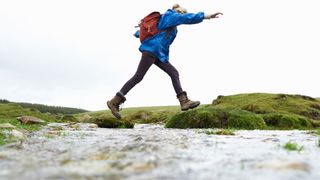
(Image credit: Getty Images)
Non-waterproof hiking boots, on the other hand, don’t have this waterproof membrane. Instead, they tend to have mesh paneling or are made from lightweight materials to encourage airflow and keep your feet cool. This also makes them more lightweight and less rigid.
“Other features will generally be the same though,” says Gemma Smith, Footwear Buyer atCotswold Outdoor. “Both boots will have varying levels of support in the outsole suited to different terrain and end use, cushioning in the midsole and support throughout the boot, around the cuff, and with the lacing.”
When do you need waterproof hiking boots?
If you’re hiking in wet, muddy, cold conditions (or all three), then waterproof hiking boots are your best bet. With a pair of waterproof hiking boots you’ll be able to walk through shallow streams and puddles without having to worry about your feet getting soggy (just make sure water doesn’t go over the top of your boot because if it gets inside of them they will remain wet). As they have less breathability, they’ll also keep your feet nice and warm in colder climates.
(Image credit: Getty Images)

(Image credit: Getty Images)
Are waterproof hiking boots 100% waterproof?
Unfortunately, they’re not. “The membrane keeps water out up to a certain level of pressure, but if they are continuously submerged water will eventually seep through,” says Gemma.
Sign up to the T3 newsletter for smarter living straight to your inbox
Get all the latest news, reviews, deals and buying guides on gorgeous tech, home and active products from the T3 experts
Keeping your waterproof boots clean and reproofing the outer (just as you would with yourwaterproof jacket) will improve their waterproof performance, as well as enhance their overall lifespan. Gemma advises: ”Make sure to read the care labels to ensure your boots are looked after properly. But, if you plan on standing in water for long periods, then wellies are the best option.”
Final thoughts
(Image credit: Getty Images)

(Image credit: Getty Images)
Deciding whether you need waterproof hiking boots or not ultimately comes down to the type of terrain you’ll be encountering and the weather conditions.
“Waterproof hiking footwear is best for changeable weather environments or to use all year round to offer protection when walking in long grass, through mud and crossing small streams etc,” says Gemma.
“Whereas non-waterproof hiking footwear is slightly more breathable (since there is no additional membrane), and use materials like mesh and lightweight fabrics for better ventilation, making them best for dry environments where breathability is key."
Alternatively, avid hikers can always opt for two pairs of hiking boots – a waterproof and non-waterproof pair – so that they can switch between the two throughout the year as and when needed.

Samsung Galaxy S25: every leak, rumour and spec we’ve heard before the launch eventThis is everything we’ve heard about the new handsets
This is everything we’ve heard about the new handsets

This case turns your iPhone or Android phone into an e-reader, but there’s a catchActually, there are a couple…
Actually, there are a couple…
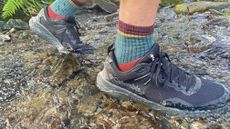
Columbia Konos TRS OutDry Hiking Shoe review: three-season trail trampers with a twistConstructed with Columbia’s innovative OutDry technology, these hiking hoofs repel water very differently to bog-standard walking boots and trekking shoes
Constructed with Columbia’s innovative OutDry technology, these hiking hoofs repel water very differently to bog-standard walking boots and trekking shoes
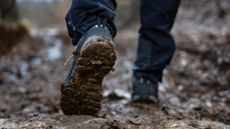
How to clean your hiking boots in five simple stepsSo they’re ready for your next adventure!
So they’re ready for your next adventure!
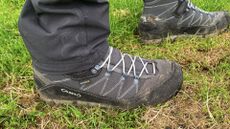
Aku Trekker Lite III GTX review: the little black dress of hiking bootsThe super comfortable, high-performing Aku Trekker Lite III GTX is a go-to winner for all kinds of hiking and backpacking
The super comfortable, high-performing Aku Trekker Lite III GTX is a go-to winner for all kinds of hiking and backpacking
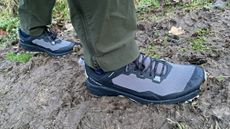
Berghaus Revolute Active Shoe review: trail-tackling waterproof walking shoesRobustly built from recycled materials to a decent design, the waterproof Revolute Active is a workhorse of a walking shoe
Robustly built from recycled materials to a decent design, the waterproof Revolute Active is a workhorse of a walking shoe
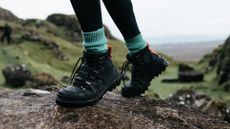
What’s a shank? We explain the anatomy of a hiking bootWe sneak a peak under the hood of the humble hiking boot to find out how it works
We sneak a peak under the hood of the humble hiking boot to find out how it works

Is Gore-Tex ePE the future of sustainable waterproof technology? We asked a fabric expertDoes the evolution of Gore-Tex’s ePE membrane mean we can buy guilt-free gear again?
Does the evolution of Gore-Tex’s ePE membrane mean we can buy guilt-free gear again?

Columbia Facet 75 Outdry Waterproof Hiking Shoes review: a family of adventure-ready footwearLightweight but hardy hooves for hitting the hills and tackling trails virtually year round
Lightweight but hardy hooves for hitting the hills and tackling trails virtually year round
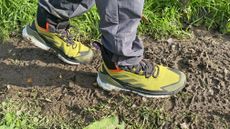
Adidas Terrex Free Hiker GTX Hiking Shoes 2.0 review: boots with bounceVersatile, high-performing hiking boots that put a proper spring in your step and add some swagger to your outdoor wardrobe
Versatile, high-performing hiking boots that put a proper spring in your step and add some swagger to your outdoor wardrobe